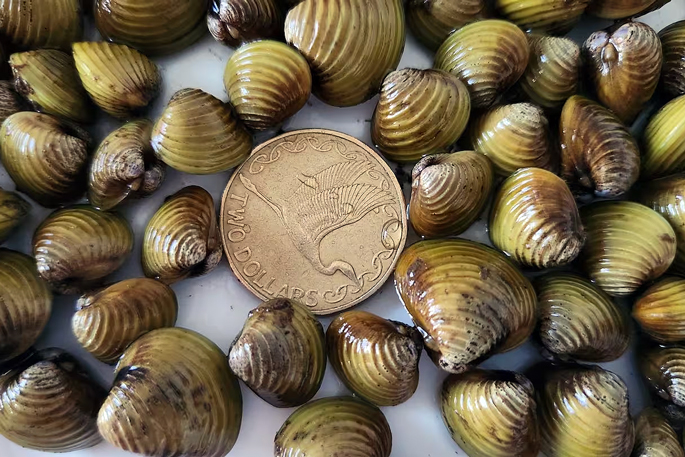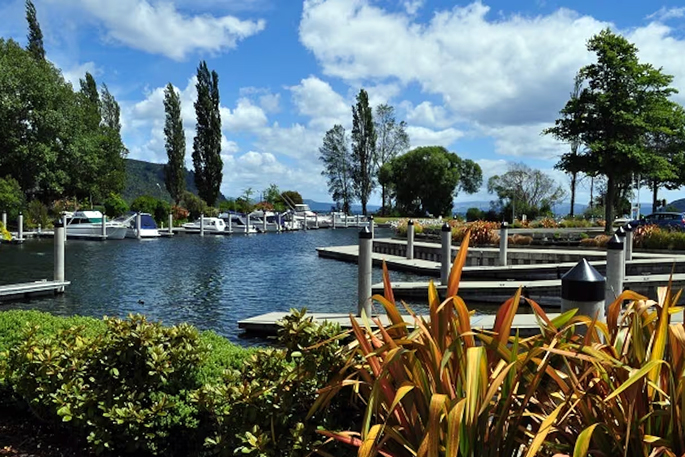A popular private marina in Lake Taupō has banned people from launching boats there if they have previously been in parts of the Waikato River infested with the invasive gold clam.
Kinloch Marina Ltd has 142 berths plus boat launching facilities. It is managed by a board which has now banned boats that have previously been in the 200km of Waikato River known to have the invasive clams - an area stretching from Lake Maraetai Landing to Tuakau.
The gold clams were most recently discovered just a few kilometres from Lake Taupō, at the Lake Taupō Aqua Park next to the Waikato River, just a few kilometres downstream of Huka Falls.
The find has seen extra testing carried out by Biosecurity NZ and Tūwharetoa Maori Trust Board inspectors around Lake Taupō.
Kinloch Marina manager John Kelly says they are concerned that boaties are not doing everything they can to prevent the spread of the invasive species, which displaces native species and clogs up infrastructure.
“It is really about protecting the lake environment and raising awareness that people should be taking the issue more seriously than they are and follow through with all the correct cleaning and stand-down periods that are required to make sure the clam is not going to be existent when the boat goes in the water.”
He says the ban is the “first port of call” but stage two for boaties is a declaration document that people can sign to declare that they have gone through the correct cleaning procedures and that will be followed by a physical inspection.
He says they are relying on people being honest, to a certain extent, but the measures should help focus boat owners on the seriousness.
“We sort of get the feeling after talking to people over summer and after talking to DoC and talking with the Taupō harbourmaster ... it is not top of mind for people and there is potentially some lax attitudes around compliance.
“We really want to push home that that is not okay. We want everyone to really address the problem and do as much as they can to prevent anything getting in.”
He says the marina has been inspected two or three times for the presence of gold clams but they are clean, so far.
“Ultimately we just want to keep it that way because we don’t know the downside of it really.”
 Invasive freshwater gold clams.
Invasive freshwater gold clams.
He agrees there can be some fatigue for boaties because of the number of aquatic pests they need to keep an eye out for but the “check, clean, dry” message applies to many of those pests.
He says they have added the Waikato River ban and associated conditions to all of their ramp passes and purchases online.
Gold clams, also known as Asian clams, were found in the Waikato River in May last year, however they are thought to have been in the river for two years or more.
Freshwater gold clams are prolific breeders, able to produce 400 juveniles a day and up to 70,000 juveniles a year.
Because they reproduce so rapidly and form large populations, the clams can clog water-based infrastructure, such as electricity generation plants, irrigation systems, and water treatment plants. They are filter feeders that can potentially compete with native species for food.
Freshwater gold clams can grow to 2cm to 3cm across but are typically much smaller.
Their colour ranges from pale gold to gold when small, and gold when larger, but they can also be blackened.
They have an obvious ribbed texture on the shell.



1 comment
gold
Posted on 18-04-2024 14:37 | By dumbkof2
as if they are going to say that they have
Leave a Comment
You must be logged in to make a comment.